What is the mission of the Cottonwood Canyons Foundation?
The mission of the Cottonwood Canyons Foundation is Supporting the Environment of the Cottonwood Canyons
Is the Cottonwood Canyons Foundation a non-profit organization?
The Cottonwood Canyons Foundation is a 501(c)3 non-profit organization. The organization’s tax identification number is 74-3058673. The organization’s State of Utah Charitable Solicitations Permit number is 6907960-CHAR.
What is your phone number and address?
The Foundation’s phone number is 801-703-7574. The Foundation’s street address is 2091 Murray Holladay Road, Holladay, Utah 84117. The Foundation’s mailing address is PO Box 712440, Cottonwood Heights, Utah 84171-2440.
What is an invasive species?
An invasive species is an introduced or non-native species that has entered an ecosystem, contributing harm to the economy, environment and/or human health.
How can I identify invasive plant species myself?
A great resource is the Salt Lake County Noxious Weeds Website. There you can find Invasive Species Fact Sheets that can tell you how to identify the species, how they spread, and the recommended treatments for each species.
How do invasive plant species affect the watershed?
Populations of invasive plant species increase erosion, alter soil composition, increase soil erosion, decrease native biodiversity, and alter wildlife habitat.
Why do you not compost invasive plants after pulling them?
Invasive species traditionally have a larger seed production than native plants. Because of this, the Foundation discards plants instead of composting seeds that could inevitably be released and grown elsewhere.
Where do you get your native plant seeds?
The Foundation harvests seeds found at worksites in the Cottonwood Canyons. The seeds are cultivated by Dryland Horticulture over the winter. The seedlings are planted in early spring/summer at restoration sites.
How can I get involved in trail work or invasive plant species control?
The Cottonwood Canyons Foundation regularly invites volunteers to join trail work crews for an opportunity to give back to public lands by conducting trail maintenance and construction projects, as well as learning about the history and ecology of local forests and how to better protect and maintain them. Please visit the Volunteer page to see what projects are currently available.
Why are you working on the trail?
The trails in the Mill Creek Canyon, Big Cottonwood Canyon, and Little Cottonwood Canyon can require a wide range of different maintenance procedures annually. Specific maintenance can be based on many factors including trail location, orientation, and surrounding environment. Basic maintenance can include the cleaning of existing water control devices, the construction of new water control devices, brush back and lopping to keep the trails open and passable, widening and reestablishment of the trails that have eroded over time, and rerouting trails that have eroded over time or have been effected by large weather events. All of these processes combined allow the public to have a healthy trail system that allows us to be engaged with public lands in a sustainable and lasting way.
Are you the Forest Service?
The Cottonwood Canyons Foundation is a non-profit organization that partners with the US Forest Service on projects in the tri-canyon area of the Wasatch Front.
How can I get involved in trail maintenance?
The Cottonwood Canyons Foundation regularly invites volunteers to join the Trail Crew for an opportunity to give back to our public lands by conducting trail maintenance and construction projects. These experiences also provide the opportunity to learn about the history and ecology of our local forests and how to better protect and maintain them.
What trails do you work on?
The Foundation’s Trail Crew works on a variety of projects and trails within the tri-canyons (Millcreek Canyon, Big Cottonwood Canyon, Little Cottonwood Canyon) and along the Wasatch Front, including the Bonneville Shoreline Trail (BST).
Who are your stewardship partners?
The Foundation’s stewardship partners include the US Forest Service – Salt Lake Ranger District, the National Forest Foundation, the Salt Lake City Public Utilities Watershed Program, Alta Ski Area, Brighton Ski Resort, Solitude Mountain Resort, Snowbird Ski and Summer Resort, Alta Environmental Center, the Bonneville Shoreline Committee, the Salt Lake Climbers Alliance, and many other organizations, volunteer groups and businesses throughout Utah.
How do I participate in a snowshoe tour?
You must register for the tour on our events calendar in advance, we cannot accept walk-ins. After you register, you will receive a program confirmation which will include further information about your specific tour.
Do I need my own snowshoes for the snowshoe tours?
For the Full Moon and Alta Tours, you will need to bring your own snowshoes. We may be able to loan out a limited number of snowshoes for Family tours at Spruces Campground for an additional fee.
What is the terrain like for the snowshoe tours?
The terrain at Spruces Campground is relatively flat, while the terrain at Alta does have some elevation gain as the tour heads up the summer road.
How do I participate in Alta Kids Day?
You can register in advance or on-site the day of the event. Once you arrive, please check in with us at the registration booth to receive your passport(s). Visit each booth to participate in an activity and receive a stamp. Once you have completed your passport, return to the registration booth for a prize!
What does it cost to participate in Alta Kids Day?
Alta Kids Day is free!
How long does it take to experience Alta Kids Day?
This event is self-guided, so it can take as long as you would like. The number of partner booths vary each year, and each booth offers an activity that can take a variable amount of time (for example: crafts, guided family walks, birding, etc.). All booths are set up in the Alta Town Park, which is just a short walk from the parking lot.
How do I participate in Solitude Kids Day and Summer Fest?
You can register in advance or on-site the day of the event. Once you arrive, please check in with us at the registration booth to receive your passport(s). You can travel around the lake in either direction and stop at each booth to participate in an activity and receive a stamp. Once you have completed your passport, return to the registration booth for a prize!
What does it cost to participate in Solitude Kids Day and Summer Fest?
This event is free!
How long does it take to experience Solitude Kids Day and Summer Fest?
This event is self-guided, so it can take as long as you would like. The number of partner booths vary each year, and each booth has an activity that can be completed in roughly 3-5 minutes. The loop around the lake is 0.7 miles and you can walk it at whatever pace is most comfortable for you and your group.
How do I participate in the Wasatch Wildflower Festival?
You may register in advance or on-site the day of the festival, however we recommend registering ahead of time as there can often be a wait to register. Once you arrive, please proceed to the registration booth to check in or register for the event. You can choose to take a self-guided or a guided walk, and we offer easy, moderate, and advanced routes. We also have special walks for kids and a booth with kids coloring pages and crafts.
When should I arrive for the Wasatch Wildflower Festival?
You can arrive at any point during the day, but please be aware that the last tours leave at 1pm and advanced walks are only offered earlier in the day.
How much does the Wasatch Wildflower Festival cost?
The Festival is free to attend. If you enjoyed your experience and want to support our work, donations are greatly appreciated!
What should I bring?
Please bring water and sunscreen. Wear good, sturdy walking shoes and bring hiking poles if you feel more comfortable using them! We also recommend wearing a hat.
How much do snowshoe field trips cost?
They are completely free! All you need to worry about is transportation costs, although sometimes the Foundation does have bus scholarships of up to $500 (subject to availability).
How many students can I bring?
We can accommodate up to 60 students per day. In the case that you have more than 60 students, you will need to request multiple days.
When do you offer the Snowshoe Field Trips?
These programs run Tuesday-Friday from the beginning of January through the second week of April. Program time is 10am-12pm, and we recommend arriving at least 15 minutes prior in order to give students time to use the restrooms, divide into groups, and put on snowshoes.
Do we need to rent snowshoes?
No. We keep snowshoes on-site and will outfit all students and up to 10 adults once you arrive. We also have a winter boot program to provide winter boots to students who need them. This program is free and any winter boot needs should be communicated in advance of the program, as we do not keep winter boots on-site.
What about winter road conditions?
The Education Director will be closely monitoring road conditions leading up to your program. If adverse weather is predicted, you will be notified ahead of time and a plan will be made to monitor conditions the night before and morning of your program. Safety is our top priority, and if road conditions are unsafe then we will work with you to reschedule your field trip.
What should we wear for the snowshoe field trips?
Please remember that the weather in the canyons is drastically different than the weather in the valley. Students should wear snowpants, winter boots, winter jacket, hat, and gloves. You warm up quite a bit once you start moving, so we recommend wearing layers and having a backpack to carry any items of clothing that you remove. Bringing water is also a good idea, as there is no potable water on-site.


